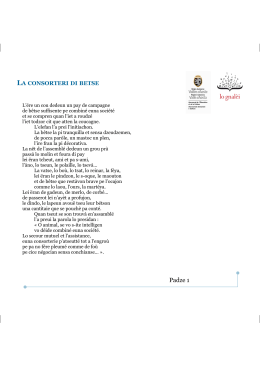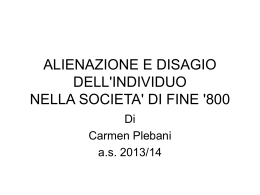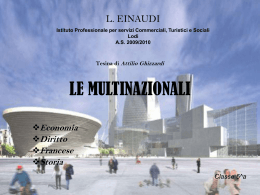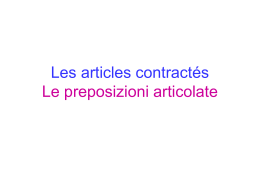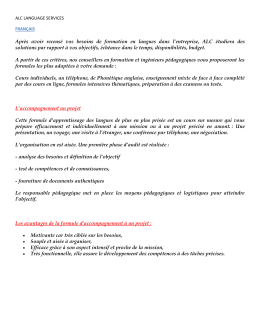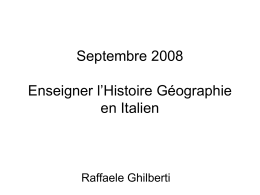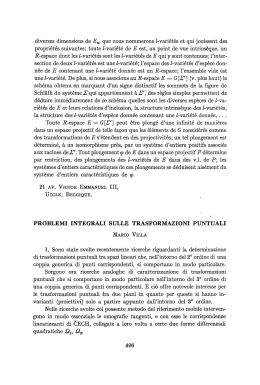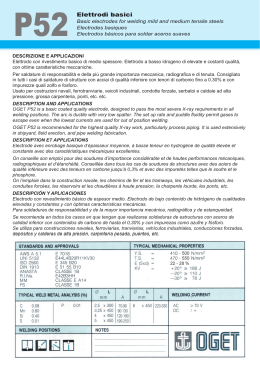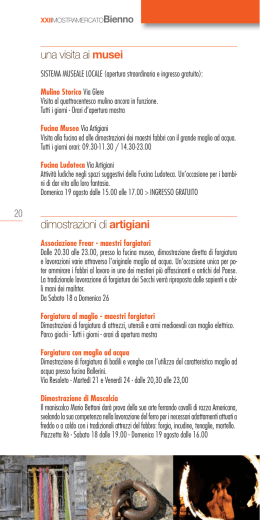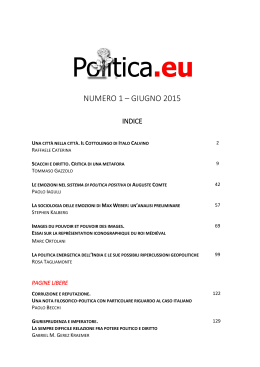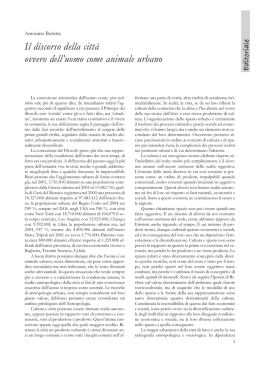2012 LA FORGIATURA milaNO Giuseppe Tortato Project: Giuseppe Tortato Project Manager: Marco Bettalli Design Team: Marco Bettalli, Giorgia Celli, Barbara Storchi, Antonio Urru Executive Project: Stefano Niccoli, A&I progetti Structures: Bruno Salesi, Biesse Consulting Plants: Stefano De Marchi, Tekser Landscape: Valerio Cozzi, AG&P Art Direction: Giuseppe Tortato/ Milano Layout General Contractor: G.D.M. Costruzioni Works Manager: Carlo Bossi Lighting Project: Artemide Glasses: Schüco Main Suppliers: Guardian, Amitti, Alpewa, Rheinzink, Mariolini, OCML, Trait d’Union Client: La Forgiatura Property Management: Real Step Photos: Andrea Pugiotto Address: via Varesina 158, Milano, Italy Gross Area: 16.500 m2 Common Spaces and Green: 8.000 m2 Commercial Area: 25.000 m2 Total Investment: 50 million euros Existing Buildings Requalification: 14.000 m2 New Buildings: 10.000 m2 Buildings: 7 La Meccanica: 5.000 m2 La Tempra: 1.900 m2 La Forgia: 3.600 m2 La Tecnica: 1.100 m2 Raimondi Building: 10.000 m2 Office Building: 2.800 m2 Underground Parkings: 2 Car Places: 250 7.000 m2 glass surfaces 7.000 m2 zinc roofing 200 m2 PV panels 1.300 m2 external wooden paths and terraces 1.000 m2 Cor-Ten facades La Forgiatura è stata realizzata seguendo la filosofia del pieno recupero delle strutture d’epoca, lasciate a vista, una vera e propria rigenerazione del sito nel segno della continuità tra il passato, il presente e il futuro: l’industria che si trasforma da “pesante” a laboratorio di idee, e segue le esigenze e i bisogni che cambiano così come cambia il modo di rapportarsi con la città, ma restano vive le sue radici e l’identità dei luoghi: “Per questo progetto – dice l’architetto Giuseppe Tortato dello studio Milano Layout – che si propone come modello di rigenerazione urbana non violenta con una forte integrazione tra elementi architettonici e paesaggistici, abbiamo adottato una concezione inusuale degli elementi naturali, quali la terra e la luce, utilizzandoli quasi fossero ‘materiale da costruzione’, come i mattoni o l’acciaio delle strutture. L’approccio progettuale è stato sviluppato secondo criteri di sostenibilità ambientale, con un articolato percorso di analisi e pianificazione attento alle prestazioni energetiche, termiche, illuminotecniche e acustiche, mirato al raggiungimento di alti livelli di confort ambientale e all’abbattimento dei consumi legati alla climatizzazione e all’illuminazione artificiale”. La sostenibilità ambientale è stata garantita da un approccio virtuoso che comprende l’adozione di un impianto a fonte idrotermica (geotermia povera), recupero delle acque meteoriche, inserimento di una porzione di copertura fotovoltaica, illuminazione a led. Questi elementi contribuiscono a un risparmio energetico fino all’80% rispetto alle costruzioni tradizionali e hanno permesso al progetto di ottenere la Classe B Energetica. Tutti gli impianti sono celati sotto le colline artificiali e ispezionabili tramite un tunnel che corre sotto all’edificio. La Forgiatura a été réalisée selon la philosophie d’une réhabilitation totale des structures originales mantenues à vue. Il s’agit d’une véritable régénération du site sous le signe de la continuité entre le passé, le présent et l’avenir : l’industrie qui passe de “lourde” à un laboratoire d’idées et suit les exigences et les nécessités qui changent, comme change notre rapport avec la ville, tout en conservant bien vivantes ses racines et l’identité des lieux. “Pour ce projet – affirme l’architecte Giuseppe Tortato du bureau Milano Layout – qui se présente comme modèle de régénération urbaine non violente avec une forte intégration entre les éléments architecturaux et paysagers, nous avons adopté une conception inusuelle des éléments naturels tels que la terre et la lumière, en les utilisant presque comme s’ils étaient un ‘matériau de construction’, comme les briques ou l’acier des structures. Notre démarche a suivi des critères de durabilité environnementale, avec un parcours d’analyse et de planning attentif aux prestations énergétiques, thermiques, de mise en lumière et acoustiques, visant à atteindre un haut niveau de confort environnemental et à réduire la consommation liée à la climatisation et à l’éclairage artificiel”. Les aspects environnementaux ont été garantis par une approche ‘vertueuse’ comprenant l’adoption d’un système à source hydrothermique (géothermie pauvre), la récupération des eaux météoriques, l’introduction d’une partie de couverture photovoltaïque, l’éclairage à led. Ces éléments contribuent à économiser jusqu’à 80% d’énergie par rapport aux constructions traditionnelles et ils ont permis au projet d’obtenir la Classe B Energétique. Toutes les installations sont dissimulées sous les collines artificielles et peuvent être inspectées au moyen d’un tunnel sous l’édifice. The Forgiatura has been built according to the philosophy of fully renovating period structures that are left exposed, an authentic means of regenerating this site in the name of continuity between past, present and future: “heavy” industry is converted into workshop of ideas, according to needs and requirements that change in the same way interaction with the city is changing, but whose roots and identity are kept alive. “For this project – so the architect Giuseppe Tortato from the Milano Layout firm concluded – which aims to be a benchmark for nonviolent inner-city regeneration featuring powerful integration between architectural and landscape features, we adopted an unusual approach to natural elements like soil and water, using them as if they were ‘building materials’ì, just like the bricks and steel in other structures. The design approach was developed along the lines of environmental sustainability, based on elaborate studies and planning geared to energy, heating, lighting and sound ratings and aimed at achieving the highest possible levels of environmental comfort while reducing consumption due to air-conditioning and artificial lighting”. Environmental sustainability is guaranteed by a virtuous approach involving the use of a hydrothermal (simple geothermal) system, retrieving rainwater, incorporating a section of photovoltaic roofing and installing LED lighting. These features enable energy savings of up to 80% compared to conventional constructions and have resulted in the project being awarded a Class B Energy rating. All the plants and systems are hidden away in artificial hills and can be inspected along a high-tech tunnel running beneath the building. 74 l’AI 108 74-83 forgiatura.indd 2 7-08-2012 19:40:59 74-83 forgiatura.indd 3 7-08-2012 19:42:09
Scarica
